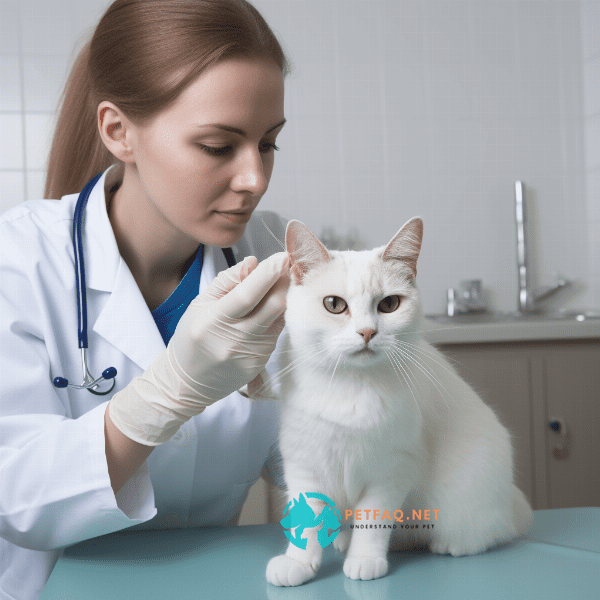Table of Contents
- What is dental tartar in cats?
- Causes of dental tartar in cats
- Signs that your cat may have dental tartar
- Why is it important to remove dental tartar in cats?
- Options for cat dental tartar removal
- How to prevent dental tartar buildup in cats
- Home remedies for cat dental tartar removal
- When to consult a veterinarian for cat dental tartar removal
- Risks associated with cat dental tartar removal procedures
- Aftercare tips for cat dental tartar removal.
What is dental tartar in cats?
Dental tartar, also known as calculus, is a common dental problem in cats. It refers to a yellow or brown-colored hard substance that accumulates on the surface of teeth and under the gum line. Tartar is made up of mineralized plaque that forms when the bacteria in the mouth mix with saliva and food particles.
Dental tartar buildup in cats can lead to a number of problems, including bad breath, gum inflammation, tooth decay, and tooth loss. If left untreated, it can also lead to more serious health issues such as kidney disease and heart problems.
Preventing dental tartar buildup is crucial to maintaining your cat’s oral health. Regular brushing, healthy diet, and dental checkups can help prevent the buildup of dental tartar in cats. However, if dental tartar has already developed, it will require professional intervention for removal.
There are a number of methods available for cat dental tartar removal. One common method is scaling, where a veterinarian uses special dental tools to remove the tartar buildup from the teeth. This is done under anesthesia to ensure that the cat is comfortable and does not experience any pain during the procedure. Another option is a dental cleaning treatment that involves ultrasonic scaling and polishing.
In addition to professional treatment, there are also various home remedies that can help reduce dental tartar in cats, such as brushing your cat’s teeth regularly, offering dental chews and treats, and adding supplements to their diet that promote dental health.
Overall, dental tartar in cats is a common problem that requires prompt attention and treatment. By taking preventative measures and seeking professional intervention when needed, you can help your cat maintain good oral health and prevent more serious health problems down the line.
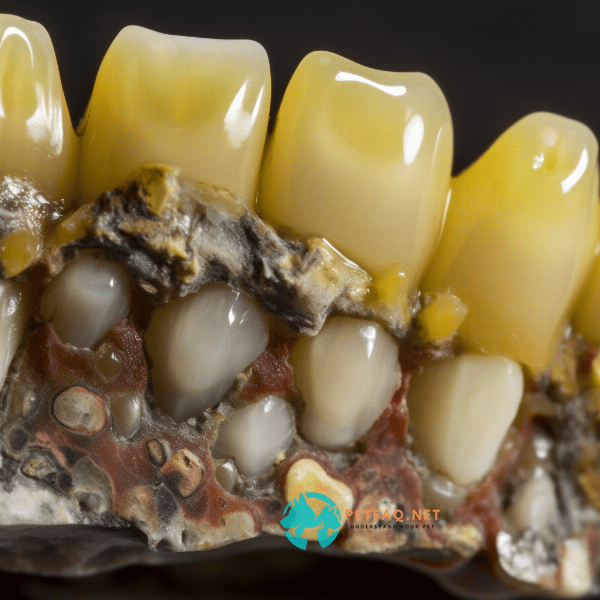
Causes of dental tartar in cats
Dental tartar in cats is a common dental problem that affects many cats worldwide. It is a buildup of hardened plaque that accumulates on the teeth, causing gum inflammation, bad breath, and tooth decay. If left untreated, dental tartar can lead to serious dental problems such as gingivitis, tooth loss, and even systemic health issues. Therefore, it is essential to understand the causes of dental tartar in cats and how to prevent it.
One of the leading causes of dental tartar in cats is a lack of dental care. Without regular brushing and cleaning, plaque can build up on the teeth, leading to tartar formation. Additionally, some cats are prone to dental problems due to genetics or health issues, which can increase the risk of tartar buildup.
Another factor that contributes to dental tartar in cats is diet. A diet that is high in carbohydrates and low in protein can cause tartar formation. Dry kibble can also contribute to tartar buildup, as it does not clean the teeth as effectively as wet food or raw diets.
It is essential to note that dental tartar removal is the only way to eliminate tartar buildup in cats. Without proper removal, tartar can continue to build up, leading to more significant dental problems. Cat dental tartar removal is typically performed by a veterinarian under anesthesia, and it involves the use of specialized tools to remove the tartar from the teeth.
In conclusion, dental tartar in cats is a common problem that can lead to serious dental and health issues. Understanding the causes of dental tartar and how to prevent it is crucial for maintaining your cat’s overall health. If you suspect that your cat has dental tartar, it is important to schedule a veterinary exam to determine the best course of action, including cat dental tartar removal if necessary.
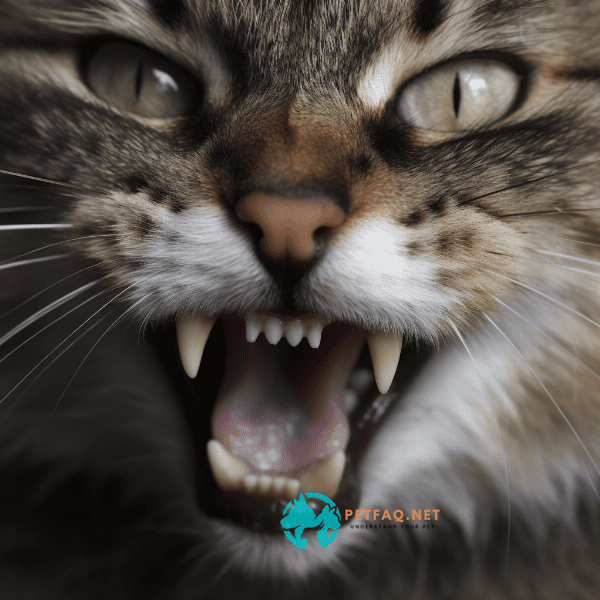
Signs that your cat may have dental tartar
As a pet owner, it’s essential to keep an eye out for any potential health issues your cat may be experiencing. One common problem that cats can face is dental tartar buildup. This occurs when plaque and bacteria accumulate on the teeth and gums, eventually hardening into a yellowish or brownish substance called tartar. If left untreated, dental tartar can cause bad breath, gum disease, and even tooth loss.
Here are some signs that your cat may have dental tartar:
1. Bad breath: If your cat’s breath has an unpleasant odor, it may be a sign of dental problems.
2. Discolored teeth: Yellow or brown discoloration on your cat’s teeth can indicate the presence of tartar.
3. Swollen or bleeding gums: Tartar buildup can cause inflammation and bleeding of the gums.
4. Difficulty eating: Cats with dental problems may have difficulty eating or show signs of pain while chewing.
If you notice any of these symptoms, it’s important to take your cat to the vet for a checkup. Your vet can perform a dental exam and recommend a course of treatment, which may include dental tartar removal.
Cat dental tartar removal is a procedure that involves removing the buildup of tartar from your cat’s teeth and gums. This can be done through a variety of methods, including scaling, polishing, and extractions if necessary. It’s important to note that dental tartar removal should always be done by a licensed veterinarian, as attempting to remove tartar at home can cause injury to your cat.
In addition to professional dental cleanings, there are also things you can do at home to help prevent dental tartar buildup in your cat, such as regular toothbrushing with pet-specific toothpaste, providing dental-friendly treats, and using oral hygiene products recommended by your vet.
By keeping an eye out for signs of dental tartar buildup and taking the necessary steps to prevent and treat it, you can help ensure that your cat maintains good dental health and overall well-being.
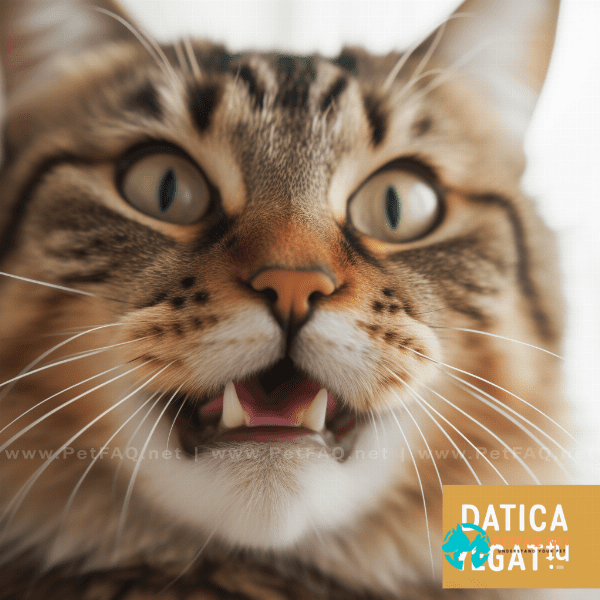
Why is it important to remove dental tartar in cats?
Cat dental tartar removal is an essential aspect of feline dental health. Tartar, also known as dental calculus, is a hard, yellowish substance that builds up on the teeth of cats. It is formed from mineral deposits that accumulate on the teeth over time. Tartar buildup is a common dental issue in cats, and it can lead to various health problems if left untreated.
One of the primary reasons why it is essential to remove dental tartar in cats is to prevent periodontal disease. This is a severe gum disease that can cause pain, discomfort, and tooth loss. Tartar buildup on the teeth creates a perfect environment for the growth of harmful bacteria, which can lead to gum infections and inflammation. Regular dental checkups and cat dental tartar removal can help prevent periodontal disease and keep your cat’s teeth healthy.
Dental tartar in cats can also cause bad breath, which can be unpleasant for pet owners. If your cat has bad breath, it could be a sign of dental tartar buildup. Removing tartar can eliminate the odor and improve your cat’s overall oral health.
In addition to preventing periodontal disease and bad breath, cat dental tartar removal can also help prevent other health problems. Tartar buildup can lead to tooth decay, which can cause pain and difficulty eating. It can also increase the risk of bacterial infections in the mouth, which can spread to other parts of the body.
In conclusion, cat dental tartar removal is crucial for maintaining your cat’s oral health and preventing various health problems. Regular dental checkups and cleaning by a veterinarian can help ensure that your cat’s teeth stay healthy and strong. If you notice any signs of dental problems in your cat, such as bad breath or difficulty eating, be sure to schedule a dental checkup with your veterinarian.
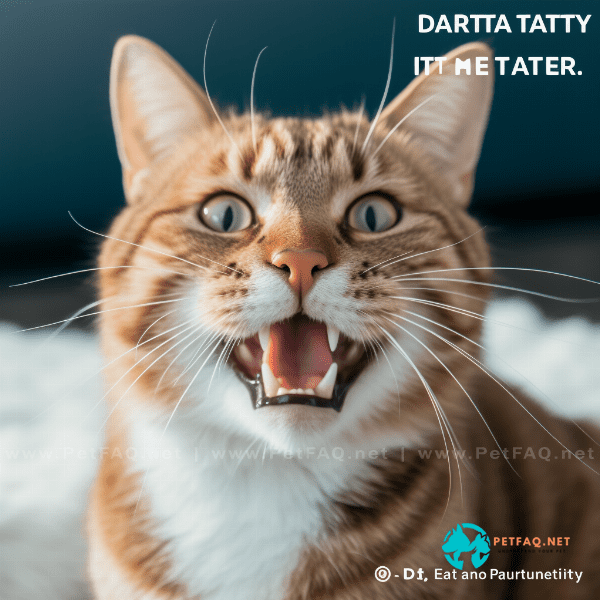
Options for cat dental tartar removal
Cat dental tartar is a common problem among pet owners. Tartar buildup on your cat’s teeth can lead to various dental and gum diseases, causing discomfort and pain for your furry friend. Fortunately, there are several options available for cat dental tartar removal.
Firstly, regular brushing of your cat’s teeth can help prevent the buildup of tartar. You can use a soft-bristled toothbrush and toothpaste specially designed for cats to clean their teeth. It’s essential to introduce your cat to teeth brushing slowly and gradually to make it a comfortable experience for them.
Secondly, dental treats and chews can also help remove tartar buildup. These treats are designed to clean your cat’s teeth while they chew, helping to remove plaque and tartar. However, it’s essential to choose dental treats that are low in calories and sugar and made from high-quality ingredients.
Thirdly, professional dental cleaning by a veterinarian is another option for cat dental tartar removal. This involves a thorough examination of your cat’s teeth and gums, followed by the removal of tartar buildup through scaling and polishing. This procedure is performed under anesthesia to ensure your cat’s safety and comfort.
Finally, there are also various dental care products available on the market, such as water additives and oral sprays, that can help reduce tartar buildup. These products are easy to use and can be added to your cat’s drinking water or sprayed directly onto their teeth.
In conclusion, regular dental care is crucial for your cat’s overall health and well-being. By implementing some of these options for cat dental tartar removal, you can help prevent tartar buildup and ensure your furry friend has a healthy, happy smile.
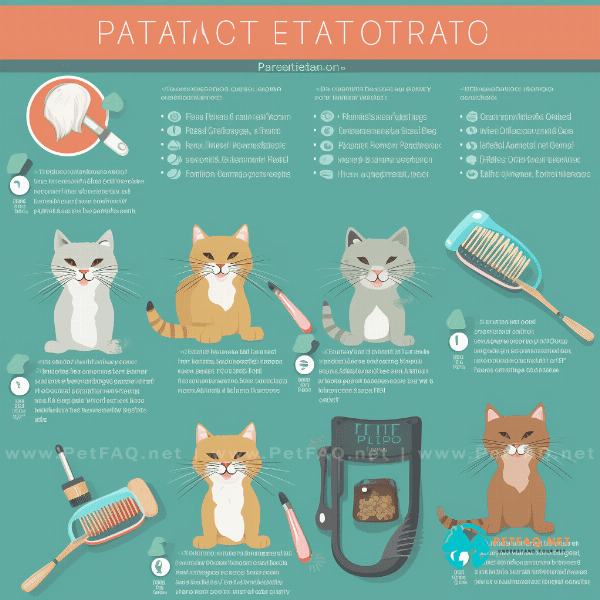
How to prevent dental tartar buildup in cats
Cats are susceptible to dental tartar buildup, which can lead to gum disease, tooth decay, and other dental health issues. Dental tartar is a yellow or brownish deposit that accumulates on the teeth, resulting from a buildup of plaque that hardens over time. While dental tartar removal for cats is possible, it’s important to prevent its buildup in the first place.
One way to prevent dental tartar buildup in cats is by ensuring they have a healthy diet. Feeding your cat a balanced and nutritious diet that’s low in carbohydrates and high in protein can help prevent plaque buildup on their teeth. Wet food can also help as it contains more water and helps to clean their teeth when they chew.
Regular teeth brushing is another effective way to prevent dental tartar buildup in cats. Using a toothbrush and toothpaste specially formulated for cats, you can brush their teeth at least twice a week. This helps to remove any plaque buildup before it hardens into tartar.
Chew toys, dental treats, and other dental care products can also aid in preventing dental tartar buildup in cats. Chew toys help massage the gums and scrape off any plaque buildup on the teeth. Dental treats contain enzymes that break down plaque and can help prevent it from hardening into tartar.
In conclusion, preventing dental tartar buildup in cats is essential for their overall dental health. With a balanced diet, regular teeth brushing, and the use of dental care products, you can help prevent dental tartar buildup and avoid the need for cat dental tartar removal in the future.
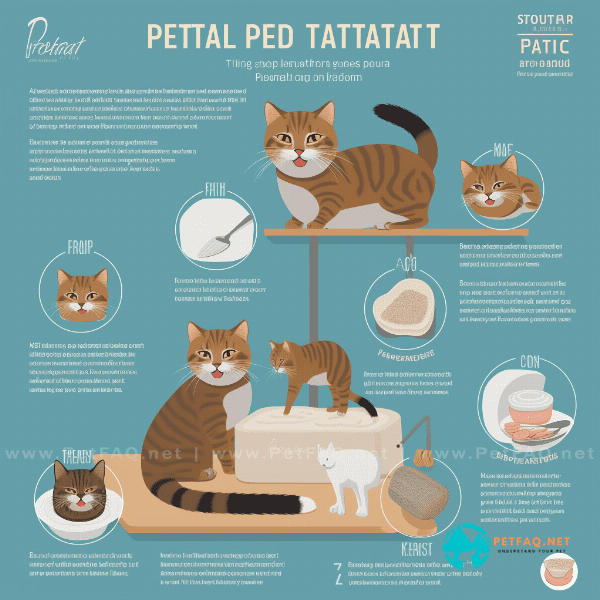
Home remedies for cat dental tartar removal
Cats are prone to dental tartar buildup, which can lead to bad breath, gum disease, and even tooth loss if left untreated. While regular dental check-ups with a veterinarian are important, there are also several home remedies that can help remove cat dental tartar.
One of the most effective home remedies for cat dental tartar removal is brushing your cat’s teeth. Use a soft-bristled toothbrush and toothpaste specifically formulated for cats, as human toothpaste can be harmful to cats. Start by rubbing your cat’s teeth with a cloth to get them used to the sensation, and gradually introduce the toothbrush. Brush your cat’s teeth at least twice a week.
Another home remedy for cat dental tartar removal is feeding your cat a raw diet. Raw meat, bones, and organs can help clean your cat’s teeth and reduce the risk of tartar buildup. Be sure to consult with your veterinarian before changing your cat’s diet.
Chewing on raw bones can also help remove tartar from your cat’s teeth. However, it’s important to supervise your cat while they are chewing and avoid giving them cooked bones, as these can splinter and cause harm.
You can also add some natural supplements to your cat’s diet to promote dental health. For example, adding a small amount of coconut oil to your cat’s food can help reduce tartar buildup. Additionally, adding a small amount of apple cider vinegar to your cat’s water can help prevent bacteria growth in their mouth.
In conclusion, there are several home remedies that can help with cat dental tartar removal. However, it’s important to remember that these remedies should be used in addition to regular dental check-ups with a veterinarian. With proper care and attention, your cat can have healthy teeth and gums for years to come.

When to consult a veterinarian for cat dental tartar removal
Cat dental tartar is a common dental issue that many cats experience. It’s a buildup of plaque on your cat’s teeth that hardens over time, causing dental issues such as bad breath, tooth decay, and gum disease. If left untreated, it can lead to more serious health issues such as heart and kidney disease. That’s why it’s important to consult a veterinarian for cat dental tartar removal.
So when should you consult a veterinarian for cat dental tartar removal? If you notice any of the following signs, it’s time to schedule a dental check-up with your vet:
1. Bad breath: If your cat has persistent bad breath, it could be a sign of dental tartar buildup.
2. Yellow or brown teeth: If you notice yellow or brown stains on your cat’s teeth, it could be a sign of dental tartar.
3. Difficulty eating: If your cat has difficulty eating or chews on one side of their mouth, it could be a sign of dental issues.
4. Bleeding gums: If your cat’s gums bleed when they eat or chew, it’s a sign of gum disease.
5. Loss of appetite: If your cat suddenly loses interest in their food, it could be a sign of dental issues.
Your veterinarian will examine your cat’s teeth and gums and recommend the appropriate treatment, which may include cat dental tartar removal. Dental tartar removal is typically done under general anesthesia, and your cat will need to be monitored closely during the procedure. After the procedure, your vet may recommend dietary changes or dental care routines to help prevent dental issues from recurring.
In conclusion, it’s important to be aware of the signs of dental issues in your cat and to consult a veterinarian for cat dental tartar removal if needed. With proper dental care, your cat can maintain healthy teeth and gums and enjoy a happy, healthy life.
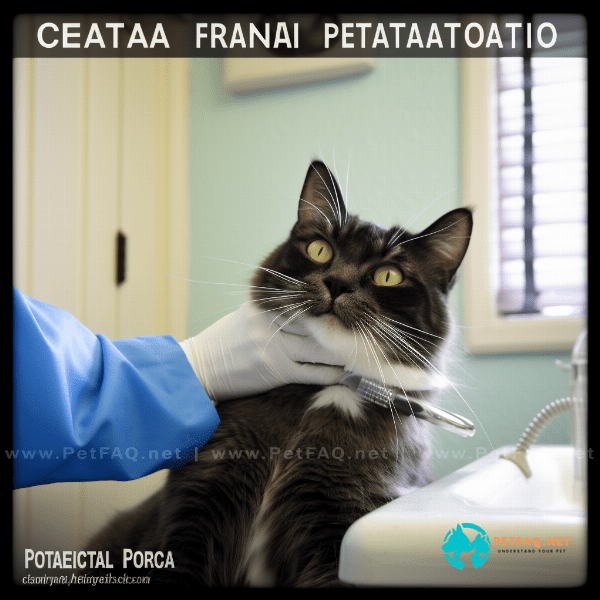
Risks associated with cat dental tartar removal procedures
Cat dental tartar removal procedures are an essential aspect of feline dental care, as the buildup of tartar on a cat’s teeth can lead to a range of serious dental health problems, including gum disease, tooth decay, and even tooth loss. However, while these procedures are generally safe and effective, there are some risks associated with them that cat owners should be aware of.
One potential risk of cat dental tartar removal procedures is the use of anesthesia. Anesthesia is often required for these procedures to keep cats calm and prevent them from moving around, but it can also pose a risk to cats, particularly those with underlying health conditions. Before undergoing any dental procedure, your cat’s veterinarian should thoroughly evaluate your cat’s health to ensure that they are a good candidate for anesthesia.
Another potential risk of cat dental tartar removal procedures is injury to the gums and teeth. This can occur if the dental instruments used during the procedure are not handled properly, or if the cat’s teeth or gums are already in a weakened state due to existing dental problems. To minimize this risk, it is important to choose a veterinarian with experience and training in dental procedures and to make sure that they use the latest techniques and equipment.
Finally, there is also a risk of infection following cat dental tartar removal procedures, particularly if the cat’s mouth is not properly cleaned and disinfected before and after the procedure. To minimize this risk, it is important to follow your veterinarian’s instructions carefully and to monitor your cat for any signs of infection, such as swelling or discharge.
In summary, while cat dental tartar removal procedures are generally safe and effective, they do come with some potential risks. By working closely with your veterinarian and taking steps to minimize these risks, you can help ensure that your cat receives the best possible dental care.
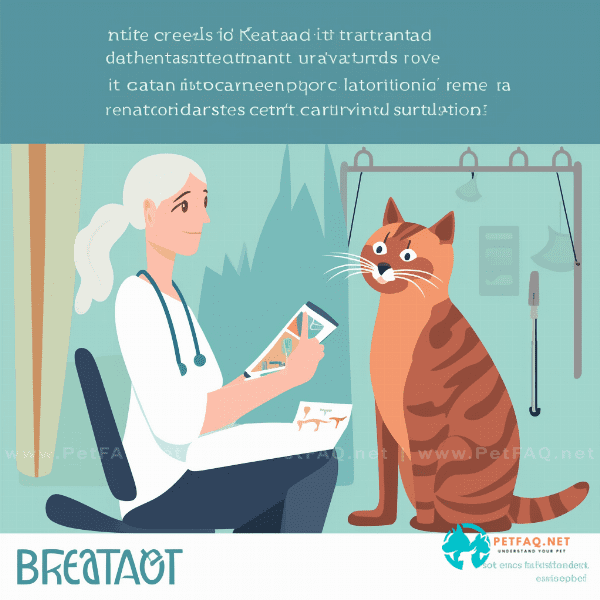
Aftercare tips for cat dental tartar removal.
Cat dental tartar removal is an important part of maintaining your feline friend’s oral health. After the procedure, it is essential to take proper care of your cat’s teeth to ensure that the tartar does not build up again. Here are some aftercare tips that you can follow to keep your cat’s teeth clean and healthy:
1. Feed your cat a healthy diet: A balanced diet is crucial for maintaining your cat’s oral health. Try to avoid feeding your cat too many treats or table scraps, as these can contribute to the buildup of tartar.
2. Brush your cat’s teeth regularly: Brushing your cat’s teeth is an excellent way to prevent tartar buildup. Use a toothbrush designed for cats and a toothpaste that is safe for them.
3. Provide your cat with dental chews or toys: Chewing on dental chews or toys can help remove plaque and tartar from your cat’s teeth.
4. Schedule regular dental checkups: Regular dental checkups with your veterinarian can help identify any dental issues before they become serious problems.
5. Consider professional dental cleanings: In addition to at-home care, your cat may also benefit from professional dental cleanings. Your veterinarian can recommend a schedule that is appropriate for your cat.
It is essential to remember that dental tartar removal is not a one-time fix. Regular dental care is crucial for maintaining your cat’s oral health and preventing the buildup of tartar. By following these aftercare tips, you can help keep your cat’s teeth healthy and clean for years to come.
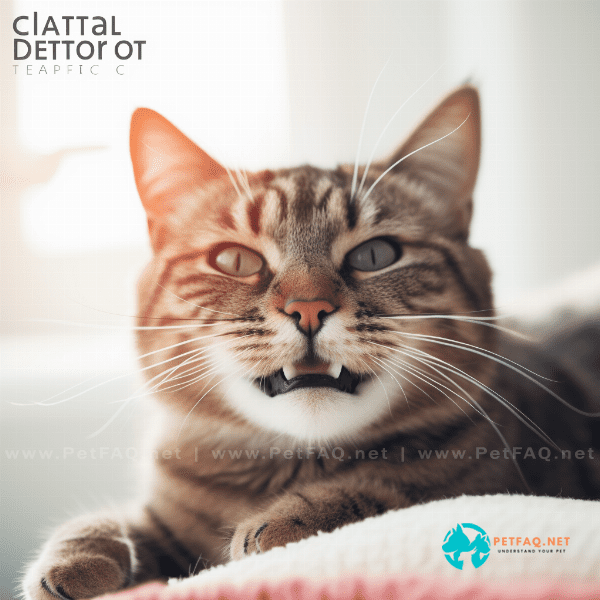
Frequently Asked Questions (FAQs) about Cat dental tartar removal:
1. What are the different methods of cat dental tartar removal?2. How much does cat dental tartar removal cost?
3. What are the benefits of dental tartar removal in cats?
4. Is dental tartar removal a painful procedure for cats?
5. What is cat dental tartar?


